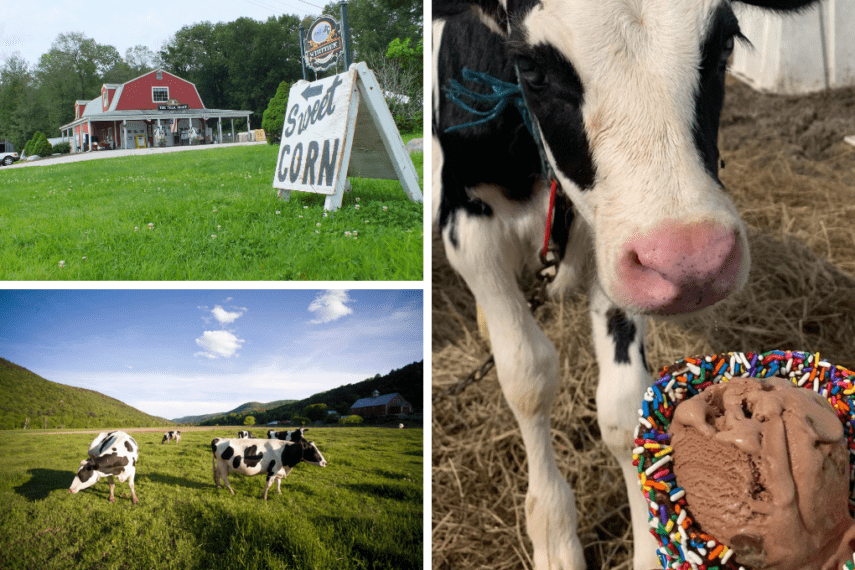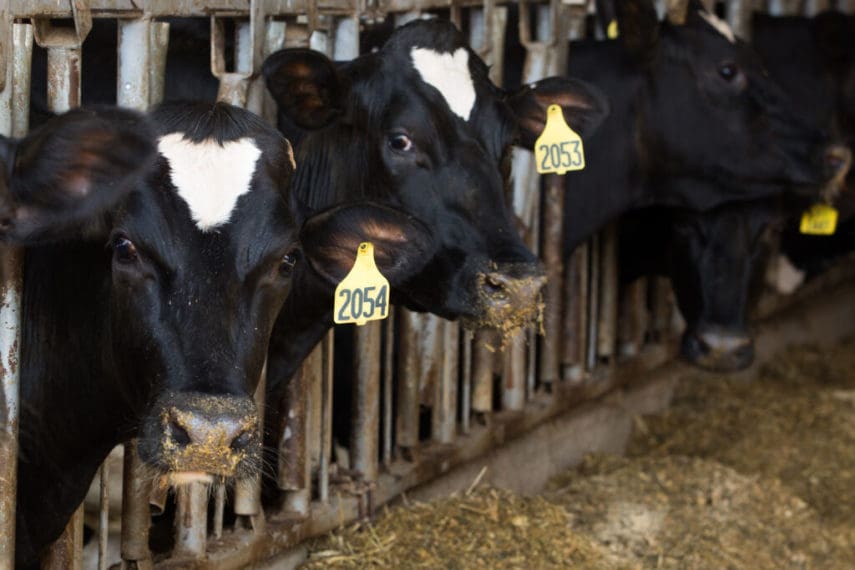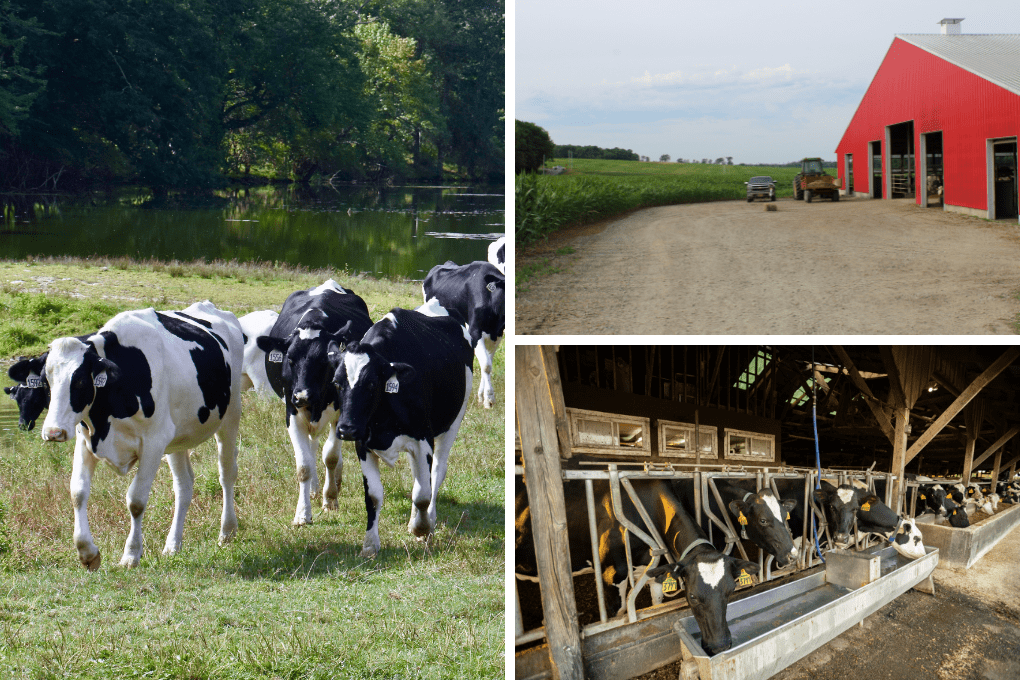
There’s no shortage of tasks on a working dairy farm, especially during the summer. Dairy farmers work hard year round to ensure their herds are healthy and well-cared for, and that doesn’t stop when it gets hot outside. Much of summer cow care is focused around making sure cows stay healthy and safe as temperatures climb, while also preparing for colder weather later in the year.
Hydration
Just like us, cows need to drink extra water when it’s hot out. A high-producing cow can drink over 25 gallons of water per day. Compared to humans who need to drink anywhere from 11.5-15.5 cups of water per day, that’s quite a lot. Throughout the warmer months, farmers make sure their cows have access to plenty of clean water to stay cool and hydrated.
Learn how Fairholm Farm in Woodstock, Connecticut uses recycled water to keep their herd hydrated all summer long here.
Keeping Cool
Cows do not sweat effectively. They rely on respiration to cool down so when it’s really warm out, farmers provide them some assistance with staying comfortable. For a cow, “comfortable” temperatures are anywhere in the range of 40-65 degrees Fahrenheit. During the summer in New England, farmers employ a number of strategies to ensure cows can stay as comfortable as possible when temperatures climb.
Sprinklers
Some farms use sprinkler systems in the barn to cool off their cows during the summer. Water is a precious resource and reusing and recycling water is standard practice dairy farms. Dairy farms recycle water for everything from keeping milk cool to watering crops to keeping the cows themselves cool.
Learn more about how dairy farmers use water responsibly.
Fans
Fans are another tool to keep cows cool. A consistent breeze plus a healthy dose of shade helps keep temperatures in the barn lower. This ensures the cows are comfortable during hot summer days. Some barns, like this one at Newmont Farm in Vermont, are equipped with automatic sensors that turn fans on and off when certain temperatures are reached or raise and lower shades on the side of the barn based on the temperature.
Facebook post from MacGlaflin Farm in Claremont, New Hampshire – “This week we are thankful for FANS!!! What a hot, humid week to be a cow. Huge shout out to our awesome group of employees! They not only maintained their normal responsibilities, they went above & beyond to take care of the animals during this heat. Our calf feeder team (without being asked) came in extra times each day to refill buckets with nice cold water. Our Herdsman and barn team watched the cows like hawks for signs of stress. Our SCR health monitoring system was invaluable in determining which cows needed some extra TLC. We are looking forward to some cooler days ahead.”
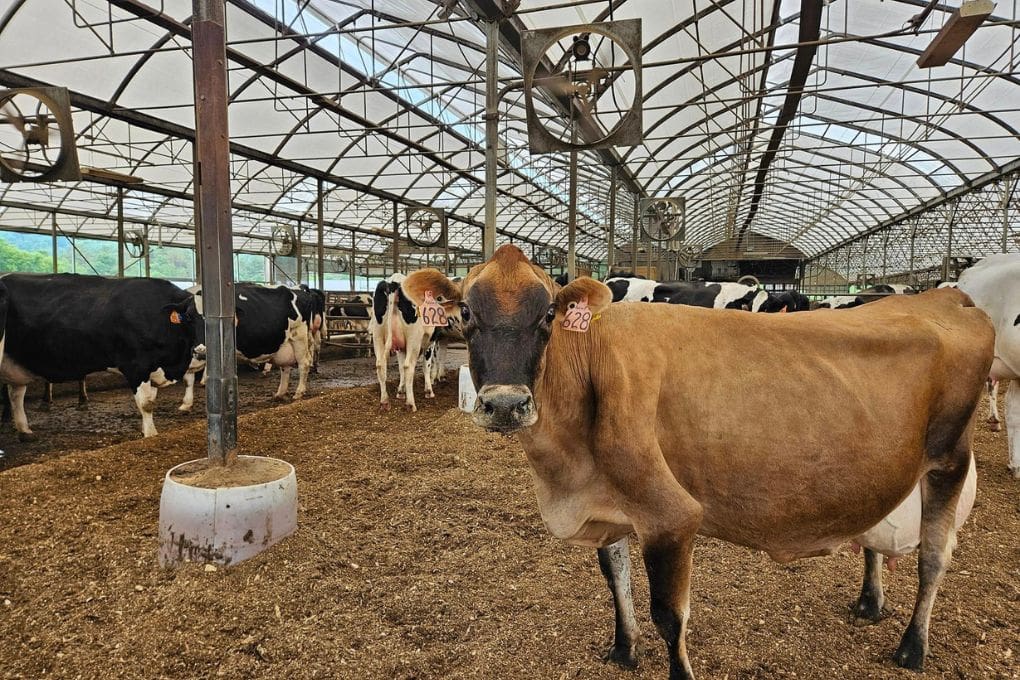
Summer Feeding and Preparing for Winter
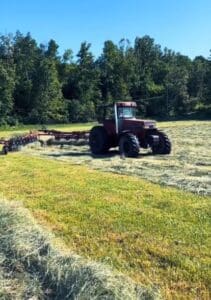
“First cut haylage is complete! 🌾🚜 Turning lush green fields into top-quality feed for our cows, this fresh, nutrient-rich haylage ensures they stay healthy and productive all year round. Hard work now means content, healthy livestock later.” – DairyGalVal
Farmers keep a close eye on what their cows are eating and that doesn’t change in the summer. Common farm-grown forages on dairy farms in the northeast include grass, haylage or hay, and corn sileage. On average, mature dairy cows eat 150 pounds of food per day, so farmers take growing feed seriously.
Summer is when farmers are growing, cutting, and preparing these food sources so if you see a dairy farmer on a tractor out in the fields, chances are they’re preparing food for their herd to enjoy throughout the winter. DairyGalVal in New York recently shared about the farm’s first haylage cutting on Instagram. Haylage is similar to hay with slightly different nutritional content. Oakridge Dairy in Connecticut also took to social media to share the progress of their corn crop.
Caring for their cows is job number one for dairy farmers, especially when it comes to summer cow care. From providing plenty of fresh water to cooling cows with fans, dairy farmers do whatever they can to keep their herds as comfortable as possible.




